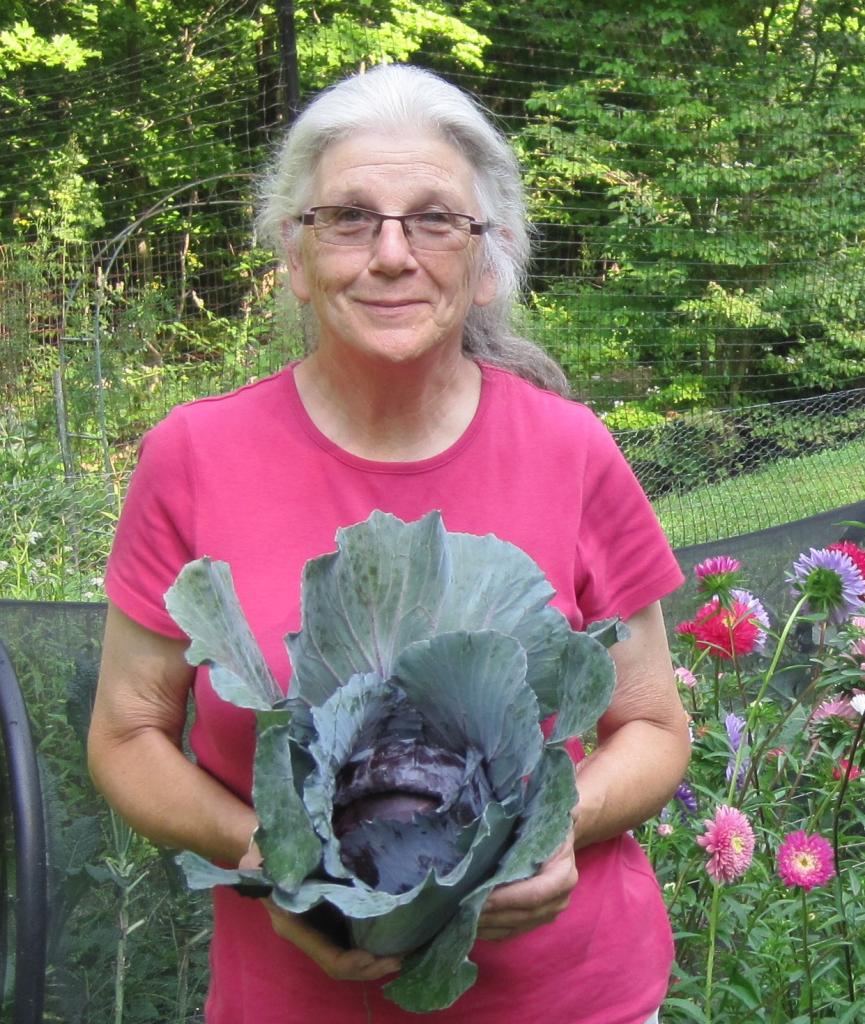Do you know your winter squash? The squash is part of American history, having started as a native vegetable grown by the Wampanoag people. Today, there are dozens of squash varieties, ranging in shape, size, and color! They're so convenient because they will last many weeks (or months) and are easily worked into so many dishes. Here's a quick guide to our favorite types of squash for eating and cooking!
This year, we had a bumper crop of winter squash to store (which made up for a poor harvest of summer squash and zucchini). The plants were content to stay in their own bed until the neighboring garlic was harvested in late July.
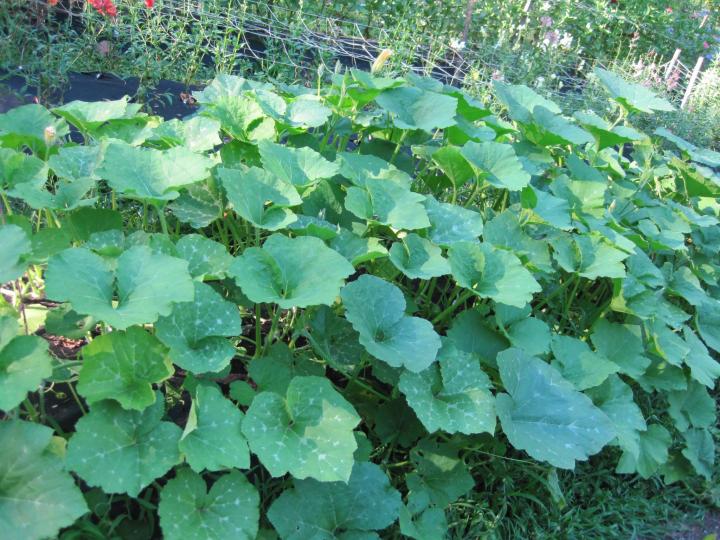
Then, the vines leapt over the path into the empty bed and took off. Even though the bed was covered with straw they managed to put down new roots and made themselves at home. Having twice the space to grow in, they produced twice the crop.
Winter Squash vs. Summer Squash
There are many types of squash—usually classified as either winter or summer squash—and folks often ask about the difference between the two types.
- Summer squash (also known as marrow), is a tender, warm-season vegetable that can be grown throughout North America during the warm, frost-free season. We're basically talking about zucchini and yellow squash; they all taste the same but they grow in different shapes and sizes. Summer squash is harvested before the rind hardens and the fruit matures (unlike winter squash, which is harvested after the fruit matures). It grows on bush-type plants that do not spread (unlike winter squash, which grow on vines).
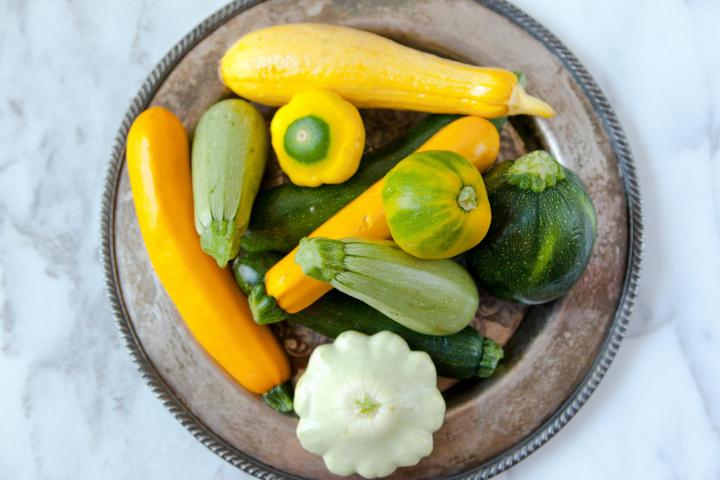
Image: Various types of summer squash. Credit: Ivana Lalicki/Shutterstock
- Winter squash come from the same family as summer squash—Cucurbita— but branch from there into 4 different species:
- Cucurbita pepo includes acorn, delicata, Connecticut field pumpkin, and spaghetti squash.
- Cucurbita maxima includes banana, buttercup, kabocha, and hubbard squash.
- Cucurbita moschata includes butternut, Long Island cheese pumpkin, and futsu squash.
- Cucurbita argyrosperma includes cushaw squash.
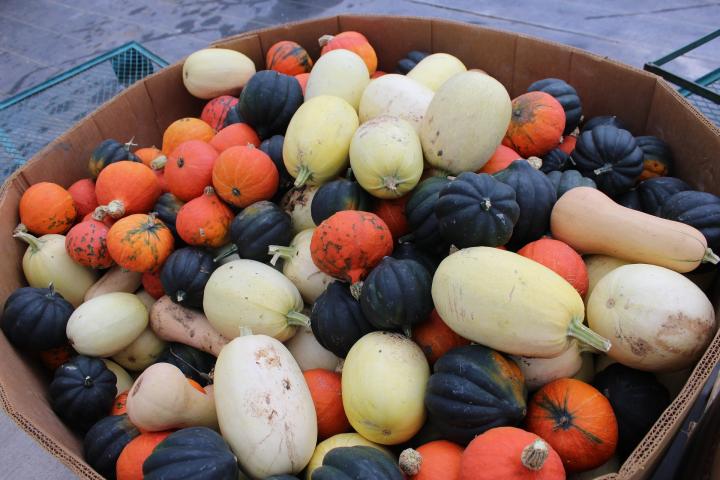
5 Favorite Types of Squash to Grow and Eat
We have grown many kinds of winter squash over the years—acorn, buttercup, red kuri, black futsu, speckled hound, North Georgia candy roaster, and blue hubbard—but we've found that our favorites among them all are delicata, spaghetti, good old 'Waltham' butternut, 'Tetsukabuto' (the Japanese pumpkin), and acorn.
1. Delicata Squash
Delicata gets harvested first and eaten right away. It's a cylinder-shaped, cream-colored squash with thin green stripes. They are usually gone in early to mid-fall before the other squash are even harvested.
This sweet squash is also called "sweet potato squash" and has such thin, tender skin that it doesn't keep well. However, you can eat it skin and all—no need to peel!
We love to slice it up and roast it! What a treat with a rich, creamy texture and delicious sweet flavor. Just slice it lengthwise, scoop out the seeds and the stringy flesh, and cut the squash halves into thick rings. Toss with olive oil, salt, and pepper, and spread on a baking sheet. Bake at 425°F for 20 to 25 minutes, until the squash is golden brown and tender.
Or, try our Maple Squash Casserole; delicata squash makes this a slightly sweet, creamy, and nutty dish.
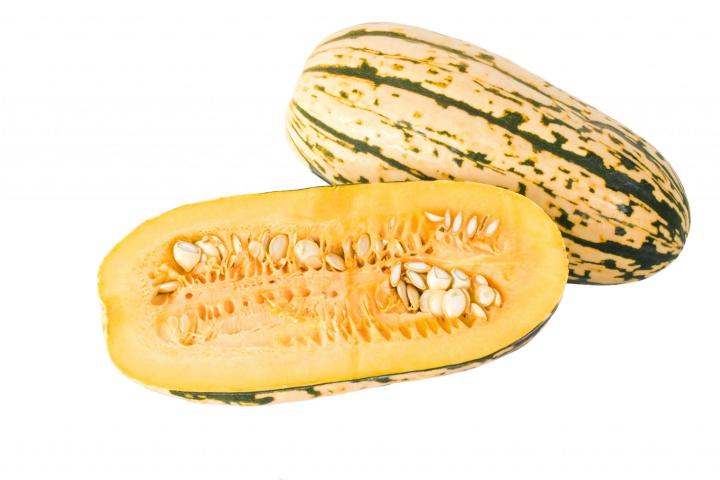
Image: Delicata squash. Credit: JackK/Shutterstock.
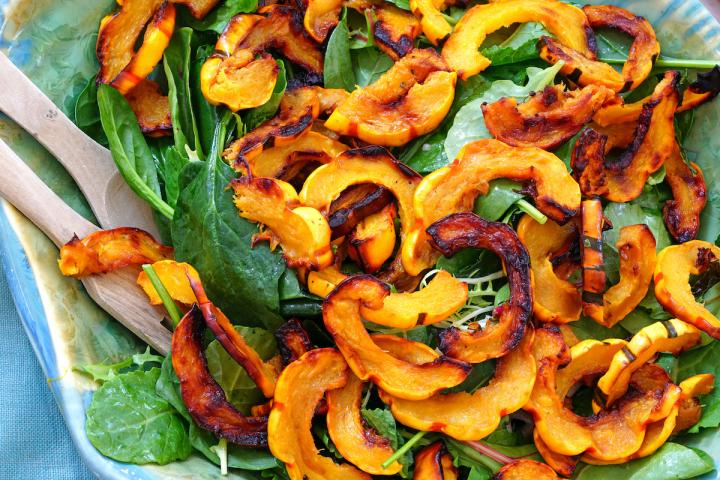
Image: Roasted delicata squash with salad greens. Credit: DQRoy/Shutterstock.
2. Spaghetti Squash
Spaghetti squash is an oval-shaped, yellow squash that's nothing like the other fleshy winter squash in texture or flavor. It grows on sprawling vines and produces 4-6 pound squash, which start out with a striped green and cream pattern, changing to solid yellow when mature. Cut in half and roasted or steamed until soft, the inside is stringy—like spaghetti—and can be fluffed up and pulled out of its shell with a fork. Served with fresh tomato sauce and some parmesan cheese; it's guilt-free pasta.
This Spaghetti Squash Vegetable Medley dish tastes like the pasta spaghetti but much lighter and healthier, bringing a colorful rainbow of vegetables.
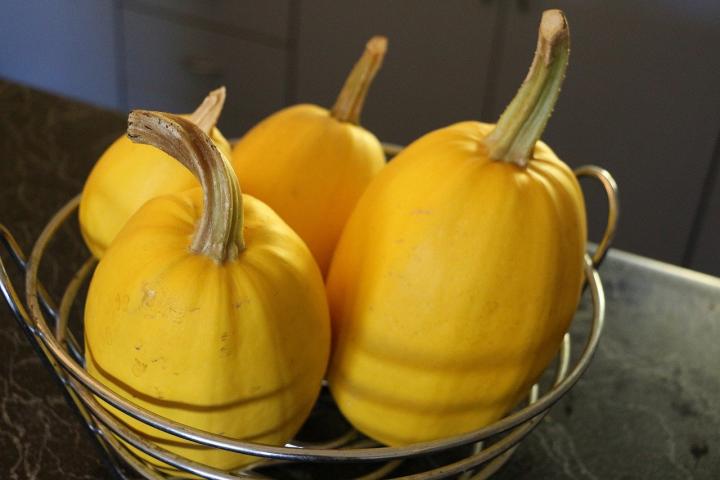
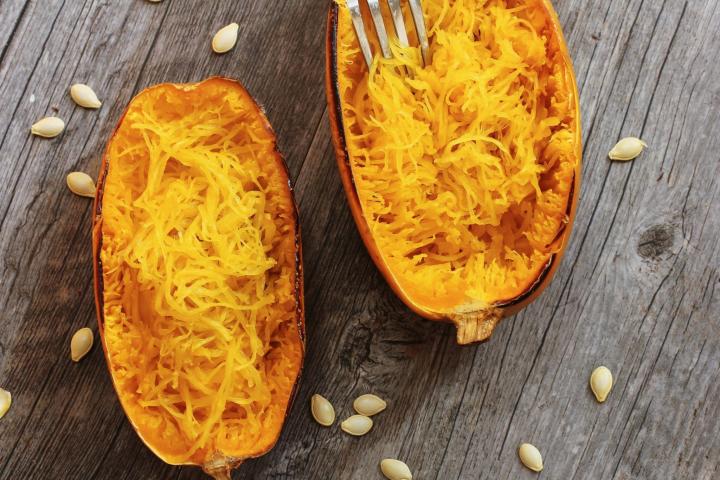
Image: Spaghetti Squash. Credit: VM2002/Shutterstock.
3. Butternut Squash
Butternut squash is one of the more popular squash. It's a cylindrical shape with beige skin and deep orange flesh. 'Waltham' butternut is an AAS winner from 1970 and an old standby. It has tan skin and a long neck that is solid squash; the seed cavity is in the bulbous end. Very sweet and smooth, it's my favorite for steaming and mashing.
A more recently developed variety is the "dwarf" butternut, 'Honeynut'. This variety produces smaller squash (perfectly sized for a single serving), but more of them. It has an excellent, sweet flavor.
Because butternut squash is so popular and often available year-round in the grocery store, it's become common for cooking. Here are some favorite recipes:
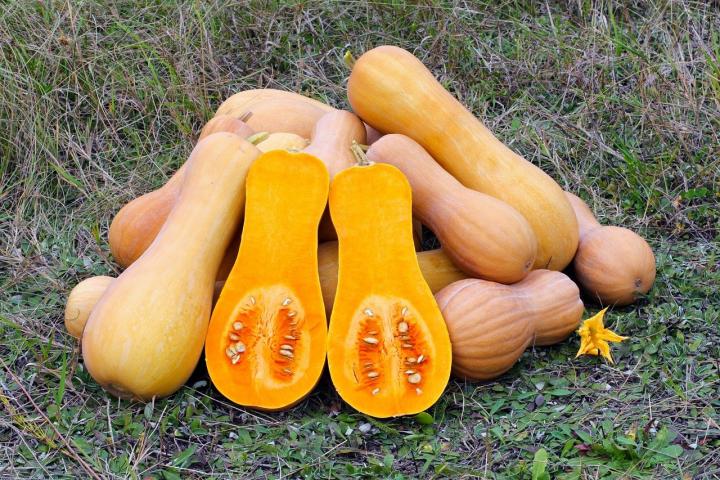
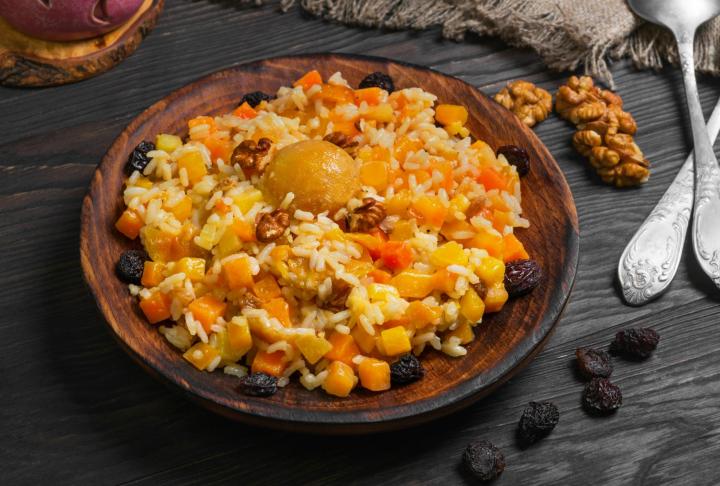
Image: Curried Butternut Squash With Rice recipe.
4. 'Tetsukabuto', The Japanese Pumpkin
'Tetsukabuto' is a hybrid cross between moschata and maxima and it is the best of both worlds: it's very disease and pest resistant and has incredibly sweet and creamy flesh. It is the longest keeper as well; we have had them last in storage until the next summer! Its vines are such strong growers that they are used as root stock for grafting melons and cucumbers to prevent diseases. It does need a pollinator, so it has to be grown with another moschata or maxima in the same vicinity.
No problem for us, since we grow butternut in the same bed with it and both do very well together. Since they are ridged, I have never tried to peel them; instead, I just cut them in half and bake with a little bit of water in the pan. They are the best tasting squash I have ever eaten!
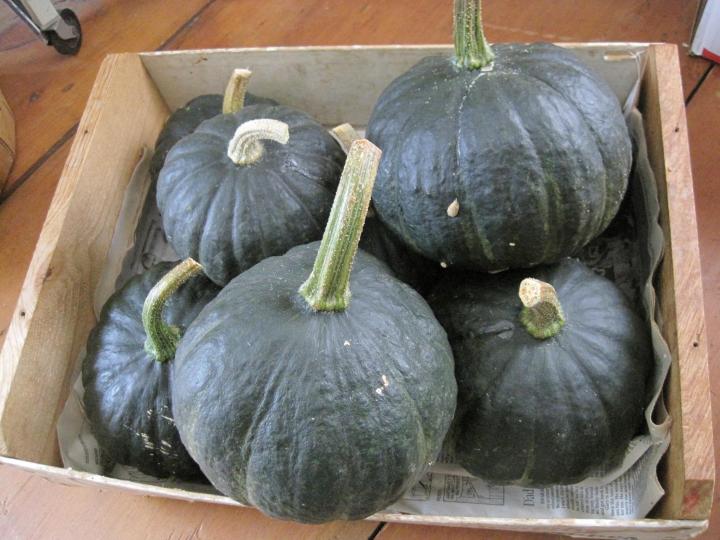
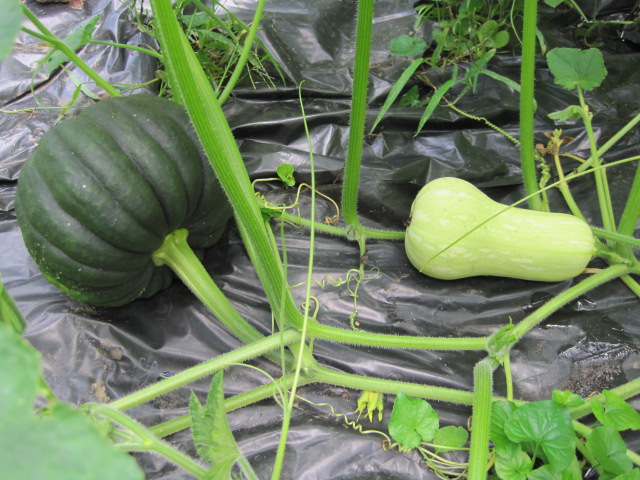
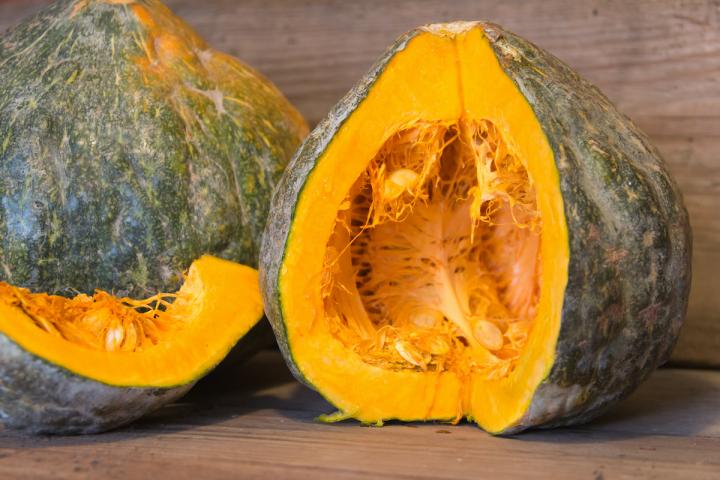
Image credit: Gabriela Bertolini/Shutterstock.
5. Acorn Squash
We'd be remiss to leave out acorn squash—one of the first squash in America. Their shape is similar to large acorns with a dark green skin and golden yellow flesh. When baked, this gift from the garden has a tender, mouthwatering taste, especially when enhanced with a little butter, brown sugar, and maple syrup.
We serve the squash in halves as little “boats”—but also you could also scoop out cooked squash and mound into single serving bowl.
Here are a few recipes:
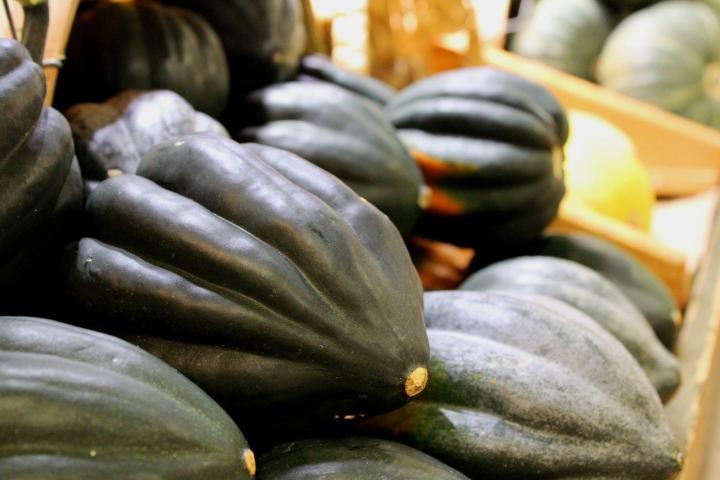
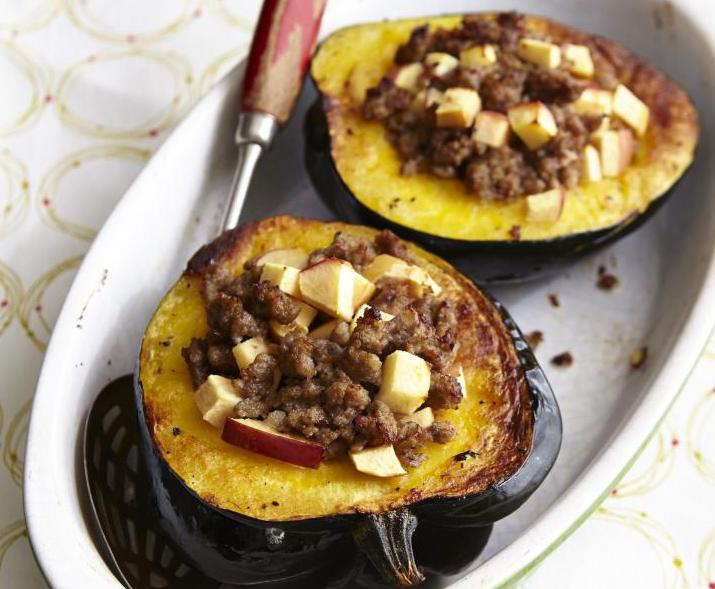
Acorn Squash Stuffed With Sausage and Apple. See the recipe! Photo by Becky Luigart-Stayner.
Squash Health Benefits
Winter squash should be an important part of your winter diet. They are an excellent source of vitamins A & C, fiber, magnesium, niacin, folate, iron, and potassium. The darker the flesh, the more beta-carotene the squash has to offer. They also have anti-inflammatory properties and contain beneficial antioxidants.
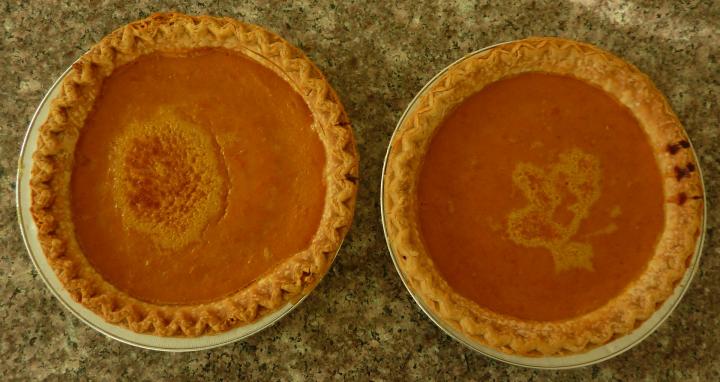
Ways to Cook Squash
Squash can be baked, roasted, steamed, sauteed, mashed, or pureed and put into soup, pasta, pies, breads, and muffins! Try this Squash Risotto that just keeps on going, or these Harvest Squash Rolls which work with any winter squash variety. When shopping, look for a squash that feels heavy and has no soft spots. Make squash a highlight of your winter meal!
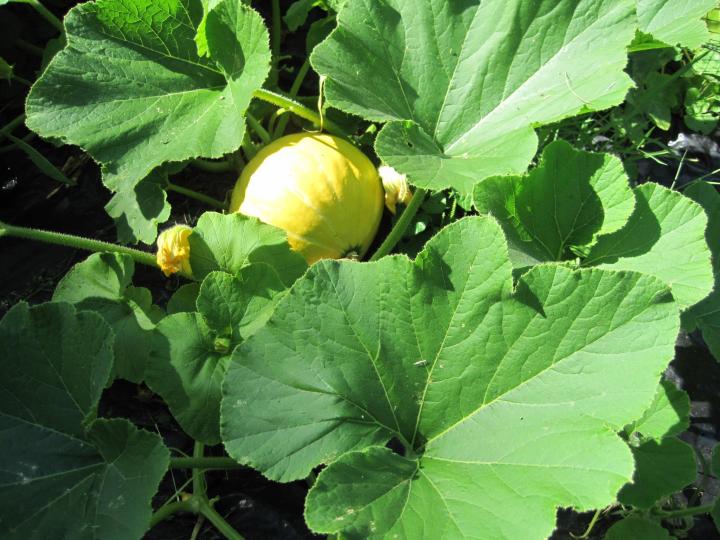
To learn about growing squash, see the Almanac's Squash Growing Guide.


















